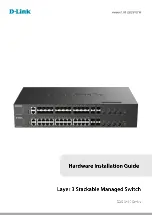
B. Clocking > P_CLK Programming
502
Tsi578 User Manual
June 6, 2016
Integrated Device Technology
www.idt.com
B.2.3.8
I2C Byte/Transaction Timeout Register
The I2C Byte/Transaction Timeout Register programs the Transaction and Byte time-outs. The timer
periods are relative to the USDIV period for the byte timeout, and relative to the MSDIV period for the
transaction timeout.
BYTE_TO Count for Byte Timeout Period
The BYTE_TO field defines the maximum amount of time for a byte to be transferred on the I
2
C bus.
This covers the period from Start condition to next ACK/NACK, between two successive ACK/NACK
bits, or from ACK/NACK to Stop/Restart condition. A value of 0 disables the timeout.
•
Period(BYTE_TO) = (BYTE_TO * Period(USDIV))
— USDIV is the microsecond time defined in I2C Time Period Divider Register.
— This timeout is disabled on reset, and is not used during boot load.
— Tsi578 reset value is 0x0000
TRAN_TO Count for Transaction Timeout Period
The TRAN_TO field defines the maximum amount of time for a transaction on the I2C bus. This
covers the period from Start to Stop. A value of 0 disables the timeout.
•
Period(TRAN_TO) = (TRAN_TO * Period(MSDIV))
— MSDIV is the millisecond time defined in I2C Time Period Divider Register.
— This timeout is disabled on reset, and is not used during boot load
— Tsi578 reset value is 0x0000
B.2.3.9
I2C Boot and Diagnostic Timer
The I2C Boot and Diagnostic Timer programs a timer used to timeout the boot load sequence, and can
be used after boot load as a general purpose timer.
COUNT Count for Timer Period
The COUNT field defines the period for the timer. The initial reset value is used for overall boot load
timeout. A value of 0 disables the timeout.
The timer begins counting when this register is written. If this register is written while the counter is
running, the timer is immediately restarted with the new COUNT, and the DTIMER/BLTO event is not
generated.
Ti
p
During normal operation, this timer can be used for any general purpose timing.
















































